
Hannah Fink’s journey from gymnast to designer inspired Somato, an elegant at-home Pilates reformer reimagining fitness equipment to blend seamlessly into homes and make Pilates accessible to all
All products featured on Athletech News are independently selected by our editors. However, when you buy something through our retail links, we may earn an affiliate commission.
Hannah Fink, a gymnast turned designer, took her love for movement and design to create Somato—a super sleek, compact Pilates reformer that’s perfect for any home. With her background in fitness and a knack for making things functional and beautiful, Hannah’s mission is clear: bring Pilates to more people in a way that’s stylish and easy. Here, she talks about the journey behind Somato, what inspired her design, and the standout features that make it a go-to for Pilates lovers at home.
Can you tell us a bit about how your background in gymnastics and design influenced the creation of Somato?
To me, gymnastics and design have always been intertwined. They’re both detail-oriented, visual disciplines that have challenged me creatively. I was always drawn to the design of gymnastics apparatuses and the way such simple devices could serve so many purposes. Two parallel bars could be a fitness device, but sling some fabric between them and you’ve got a hammock. The first thing I ever built was a small balance beam to use at home.
I discovered Pilates when I was injured and had to take time off of gymnastics. My mom took me along to her Pilates class. I was immediately drawn to the Pilates reformer and wanted to experiment with the equipment. However, I had promised my mom I would behave and wouldn’t disturb the class by swinging from the Cadillac like a feral monkey.
Growing up in a gym spurred a lifelong love for movement. My education in design inspired a love of beauty and functionality. Combining these passions in Somato is incredibly fulfilling—creating something that brings joy and strength to others in a beautifully designed, home-friendly way.
What was the “aha” moment in your small Brooklyn apartment that made you realize the need for a compact, home-friendly Pilates reformer?
You could say Somato is a product of the Pandemic, but it started long before we had heard of COVID-19. I was writing my master’s thesis on redesigning fitness equipment to look like furniture when the pandemic rolled around. I started my thesis in 2019, and by the time I completed it in 2020, my research was… well… relevant (to say the least).
Even before lockdown, Pilates classes were a rare treat. At $40 per class, a studio membership was out of my price range, especially considering my need for at least four or five workouts per week. I would supplement Pilates with other less expensive gym classes.
Having a Pilates reformer at home went from a nice idea to a necessity during lockdown. I looked for a home reformer. Something that folded up. But in Brooklyn, closet and under-bed storage is precious. Even if I found a folding reformer, I wouldn’t have anywhere to store it. There was no way I would let a bulky piece of gym equipment live as an eyesore in my living room. Even a folding reformer would have to look beautiful– like it belonged in my living room, like a piece of furniture. That was my “aha” moment. I didn’t need to invent a new fitness apparatus. I needed to reinvent the Pilates reformer.
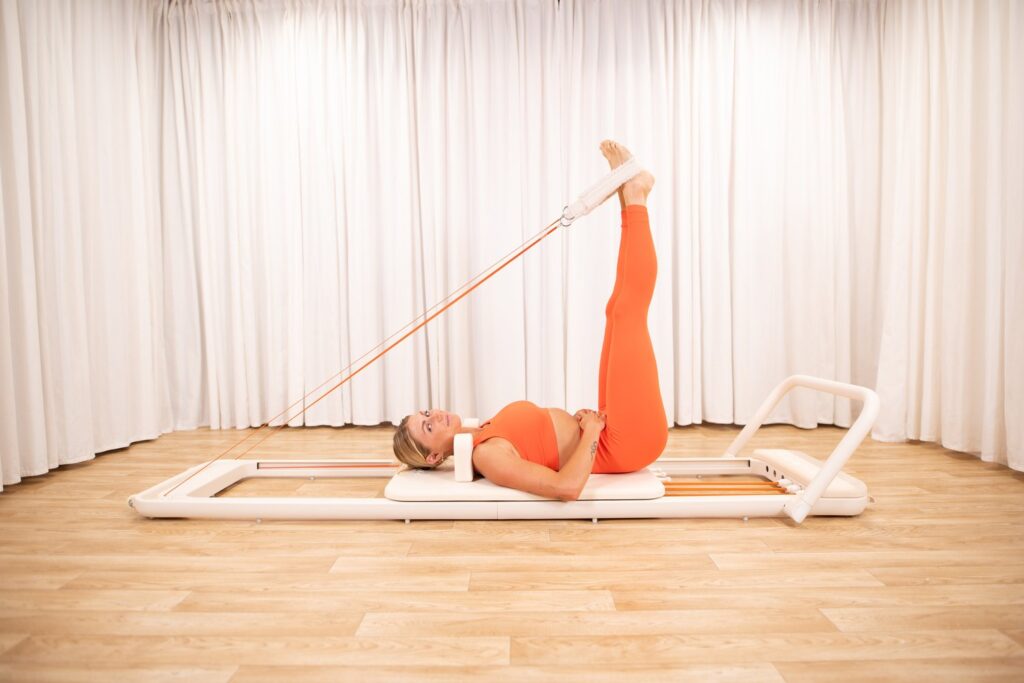
Somato has a unique design aesthetic. What were some of the key challenges in creating a reformer that’s both functional and visually appealing for small spaces?
The biggest challenge was balancing aesthetics with durability. A reformer has to support dynamic loads, so every material and design choice needs to be functional and resilient while still looking sleek.
It’s not enough to choose strong, lightweight materials. The way those materials are shaped determines their strength. For example, there are special aluminum ribs inside the carriage designed to support 300lb loads. The tracks are extruded into a shape that disperses the load across the profile, and the front and back platforms are stamped and welded to do the same.
We’re also using innovative materials and manufacturing processes that are different from what’s typically used in fitness equipment design to reduce weight and size. Our padding is not upholstered, but instead, injection molded polyurethane foam, similar to the foam used in a lot of public transportation applications.
Every millimeter counted while designing the Somato. Even the little feet are designed to slot into a corresponding hole when folded. This feature alone saved us over an inch of space. And that inch could be the difference between fitting under your bed or becoming a nuisance.
Could you walk us through the process of prototyping and engineering the Somato reformer? What did you prioritize during those three years of development?
The design process began with sketching and quickly moved to computer modeling and 3D printing. I built 28 complete reformer prototypes and hundreds more for individual mechanisms. My initial prototypes were made from cardboard and 3D-printed parts, but once I needed to test the mechanisms under real dynamic loads, I switched to a combination of milled aluminum tubing and 3D-printed parts, then later used wood for further refinement. By doing all the prototyping myself, mostly in my garage and at local machines and woodshops, I saved hundreds of thousands of dollars.
When Somato was selected for TechCrunch Disrupt Startup Battlefield and recognized as a CES Innovation Award Honoree, I invested around $15,000 in creating a fully functional aluminum prototype. I wanted to make a splash at the events with live demonstrations. While visually appealing, the design was only halfway ready, with extra material and weight that made it impractical for real use. It was a valuable lesson in not prioritizing the aesthetics until after the mechanics are fully fleshed out. I ultimately decided to showcase it strictly as a display unit at TechCrunch instead of allowing guests to test it.
After TechCrunch and CES, three incredible women invested as angels, allowing me to develop even more sophisticated prototypes with materials like extruded T-Slot aluminum (a versatile prototyping material, like adult Legos). I dove into the mechanical properties of metals, galvanic corrosion, and force simulations to test design durability. I also taught myself to create 2D engineering drawings for manufacturers.
This marked a turning point. I began working with a supplier in Shanghai to build our first production-ready iteration, transitioning from prototyping to production development. Each prototype highlighted something to improve, whether it was a weak bolt or a pinch point, and I didn’t stop until it was right. Good design alone is never enough; safety and durability are always top priorities.
Pre-Order the Somato Reformer
-
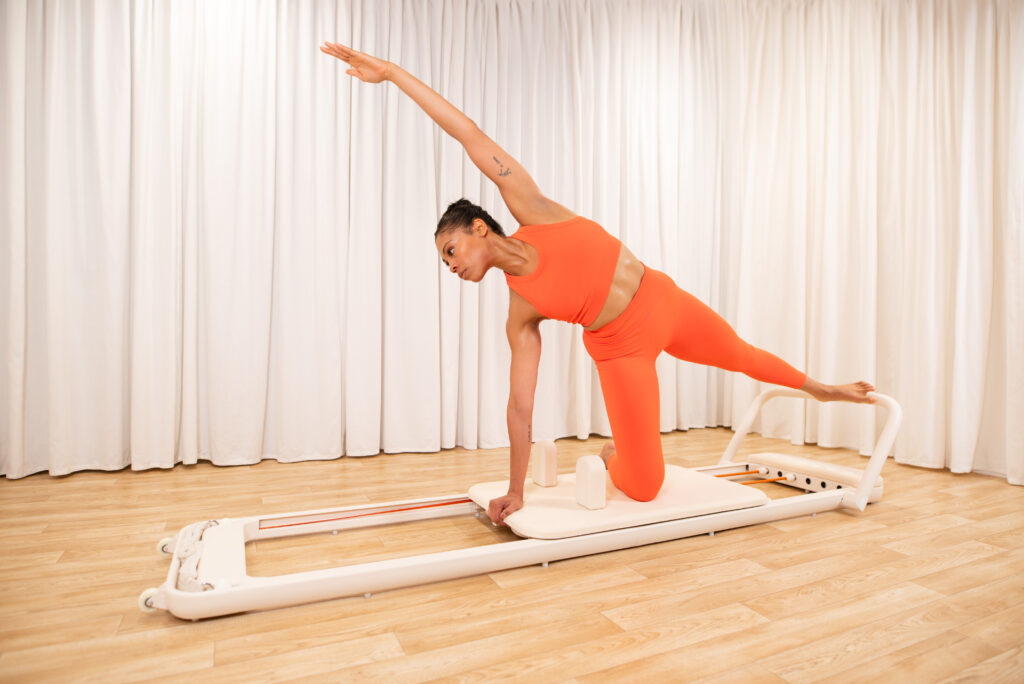
Pictured: Somato trainer Jamie Russell (Credit: Somato) The Reformer, $2,100
$2,500
With Pilates often seen as an expensive, luxury workout, how did accessibility shape your vision for Somato?
Making Pilates more accessible is truly at the heart of Somato’s mission. While studio classes are wonderful, the cost—often up to $300 a month—can make Pilates feel out of reach for many. And even if you can budget for it, the logistics can be exhausting: I’ve lost my spot in class multiple times because I was just a few minutes late, only to be charged anyway. That frustration, along with late fees and waitlists, adds a layer of stress to what should be a restorative practice. I can only imagine how much harder it is for new moms.
From personal experience, I know that wellness often feels the hardest to access when we need it the most. Somato was designed to change that by bringing a true Pilates experience into the home. It eliminates the need for expensive memberships or rushed trips to the studio, letting people practice on their own time. My goal was to create a reformer that anyone can use regularly without sacrificing quality or convenience, so Pilates can finally feel like an inclusive, everyday joy rather than a luxury.
How does the Somato reformer cater to busy women, particularly new moms, who might struggle to find time for fitness?
I’m a firm believer that women can do anything men can do. I mean look at me… I’m a metalworking solo female founder who taught myself engineering and travels alone to China to manage my supply chain. But we also have unique needs from men, especially when it comes to our physical health. After the Barbie movie, Taylor Swift’s Eras Tour, and Beyonce’s Renaissance World Tour, we’ve seen the power of the female dollar. So it’s weird to me that there is so little fitness infrastructure specifically geared toward women.
Somato brings Pilates into the home, allowing women to fit in a quality workout without the commute or time constraints. And with Somato’s lightweight, compact design, it’s incredibly easy to set up, store, and move around as needed, all while offering the functionality of a full-sized reformer. New moms can squeeze in a workout during nap time. The corporate girl can squeeze in a class before or after work.
But our app is what’s revolutionizing fitness for busy women. I’m basically designing a fitness app and workout offerings that I personally want– something that will carry me through the many transitions that happen from your 20s to 30s and 40s.
And there’s a lot that happens to women during these years. Not only are we managing our menstrual cycle, and benefit from fitness plans that take this into account, but some of us are freezing our eggs, dealing with endometriosis, preparing for pregnancy, recovering from childbirth, and managing menopause. Somato offers classes catering to all of these experiences, and it’s about time we recognize women’s needs as legitimate and worthy of innovation.
Somato’s reformer has several unique features like hidden straps, rubber springs, and a foldable design. Which feature do you feel sets Somato apart the most?
The hidden, retractable straps stand out because they address both practicality and aesthetics. Straps on a traditional reformer can get tangled or look cluttered. I’ve personally never hung my loop on the hook successfully on the first try. But ours retract seamlessly into the frame. This makes the reformer look sleek and uncluttered, even when not in use, and you never have to search for the straps when you’re ready to start your workout.
However, our rubber springs truly set Somato apart. While elastic springs are often associated with low-end reformers, we’ve developed high-quality latex rubber springs that offer consistent, reliable resistance and are durable enough to withstand frequent use. I spent extensive time refining the length and density of these springs to achieve optimal resistance.
Somato also features a simplified spring system where each spring provides the same resistance, eliminating the need to remember varied spring strengths as with traditional metal springs. You can adjust your resistance easily by adding or removing springs without second-guessing.
Our patent-pending dials make resistance adjustment even more user-friendly. With a simple twist, you can increase or decrease resistance safely—no more pinching fingers on metal springs. Our dials auto-lock when under tension, providing added safety during workouts.
Our rubber springs are comparable in resistance to a Balanced Body yellow spring, but they’re lighter, quieter, and less energy-intensive to produce. They’re also more affordable to replace, and we’re working on a recycling system so users can send back old springs to be repurposed into materials like rubber flooring.
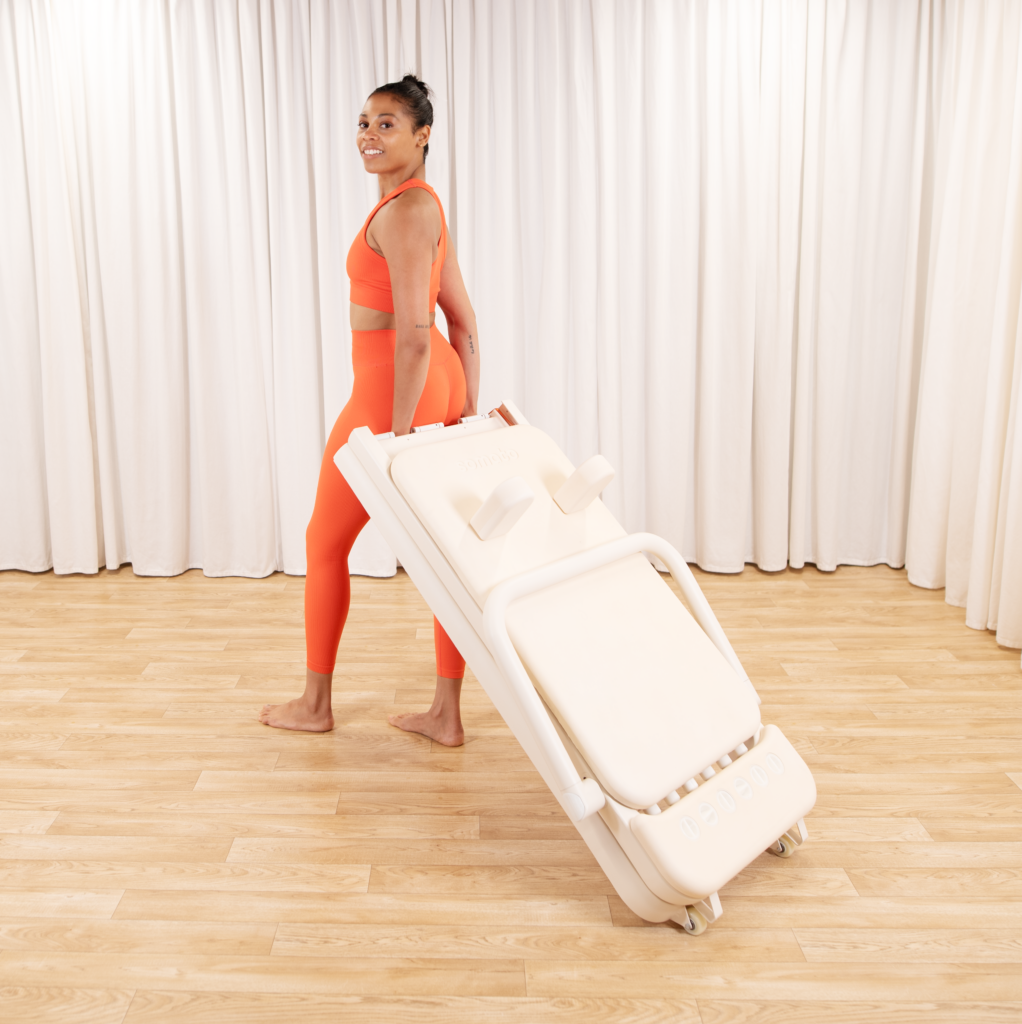
Can you tell us more about the design decisions behind making the reformer so easy to store and use, even without assembly?
Creating a truly user-friendly reformer meant focusing on simplicity. Somato ships fully assembled, so it’s ready to use right out of the box. We wanted it to be easy to fold, move, and store, so we spent a lot of time engineering the foldable frame to be secure yet incredibly simple. It’s designed for convenience without compromising on quality.
How does the Somato app complement the at-home Pilates experience? What was your goal in developing this digital aspect of the brand?
Pilates is a complicated sport. You’ll notice that a lot of home fitness equipment is made for cardio. That’s because it’s easy to design a machine and class plan around a single movement like running, cycling or rowing. But if you bring a Pilates reformer home, unless you’re an experienced instructor, you’re going to need some guidance.
The Somato app is meant to replicate the feel of a Pilates studio in your home. Our goal was to create an experience that’s engaging and personalized, with a wide variety of class styles, durations, and levels. With expert instructors and unique features, like cycle-synced classes, the app brings depth and variety to home workouts and helps users stay connected to their bodies.
The app offers classes tailored to the menstrual cycle and stages of motherhood. How did you decide to incorporate these cycle-specific and maternal health features?
This was an easy decision for me because I genuinely want to see more fitness offerings that address women’s unique needs. It’s also my way of pushing back against the status quo. For anyone who thinks there isn’t a market for women looking for tailored fitness options, think again.
The American fitness movement we know today started in the 1960s (think Jack LaLanne, Gold’s Gym, etc). It was a reaction to the high healthcare costs and doctor shortages of the 1950s. Today, women face similar uncertainties and high costs in healthcare, and I believe we’ll see a similar shift toward preventative care. Women are increasingly looking for safe, supportive spaces—even in the products we choose. Somato is a company built by women, for women.
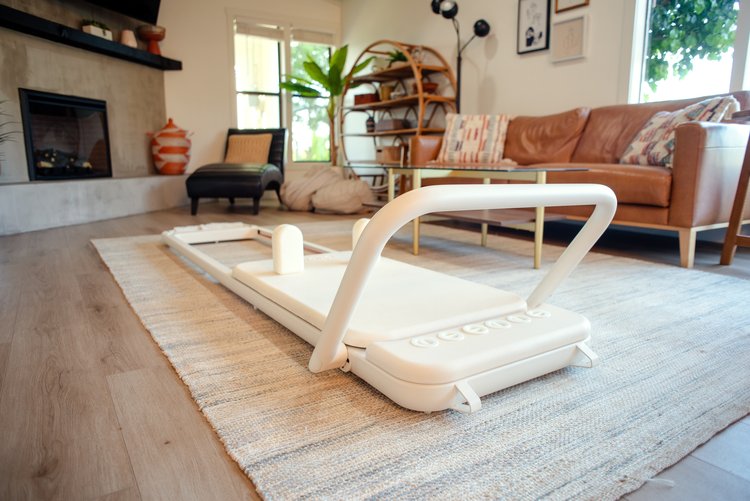
As a designer with a background in industrial design, how did you approach blending functionality with the aesthetics of the Somato reformer?
Functionality and aesthetics go hand-in-hand for me. I approached the Somato reformer as both a piece of fitness equipment and a piece of furniture. Each design element, from the retractable straps to the compact frame, serves a purpose while contributing to a clean, minimalist look. I wanted people to feel proud to have it in their homes, as it adds both beauty and wellness.
How do you see the role of design evolving in the fitness industry, particularly for at-home wellness products?
As fitness becomes more integrated into daily life, I see design playing a key role in making equipment accessible and aesthetically pleasing for home use. Fitness equipment can and should be beautiful, especially as more people prioritize wellness at home. I think we’ll continue to see products that blend form and function, catering to our lifestyles and personal spaces.
Somato is currently in its pre-order phase. What excites you most about seeing your product reach customers in April?
I’m most excited to see how Somato fits into people’s lives and brings them joy. The feedback from people who have tried it so far has been incredibly positive, and I can’t wait to see customers embracing it in their own homes. It’s one thing to have an idea and bring it to life, but seeing it actually helping people will be the most rewarding part.
Where do you envision Somato going in the future? Are there any new products or features you’re hoping to introduce?
We will be rolling out fitness accessories like the Pilates box, balls, weights, cushions, and more in the next year. We also plan to keep adding new content to the Somato app, so our users have fresh and inspiring classes to look forward to. Ultimately, I want Somato to be a brand that supports women in every aspect of their fitness and wellness journey.
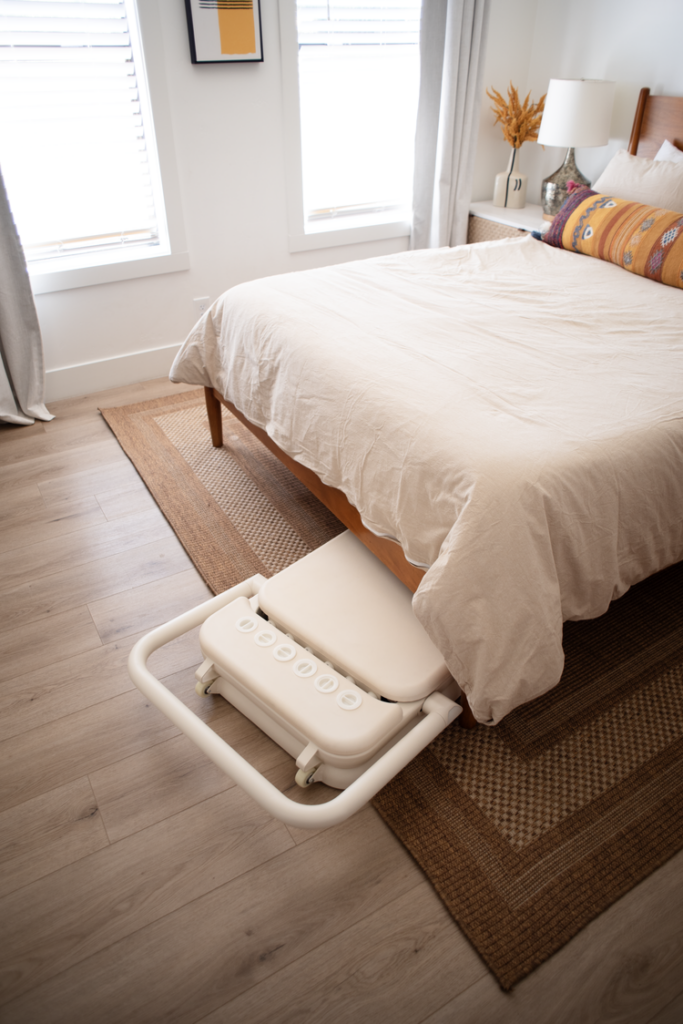
How has your personal relationship with Pilates evolved since starting Somato? Has it changed the way you approach your own fitness routine?
Creating Somato has deepened my relationship with Pilates. It’s made me appreciate the versatility and adaptability of the practice even more, especially as I’ve tailored workouts for the app. Pilates is now an integral part of my life, and building Somato has shown me how transformative it can be for anyone, regardless of their fitness level or schedule.
For someone just starting with Pilates, what advice would you give on incorporating it into their everyday life with Somato?
Be nice to yourself! As Helen Hayes once said, “The expert in anything was once a beginner.” Somato has a bunch of introductory classes that will help onboard you into the world of Pilates. We also have deep dives into every Pilates movement used in each class, so you’ll never get stuck and confused. One pro tip is to invest in a mirror so you can check your form against your instructor.
Pre-Order the Somato Reformer
-
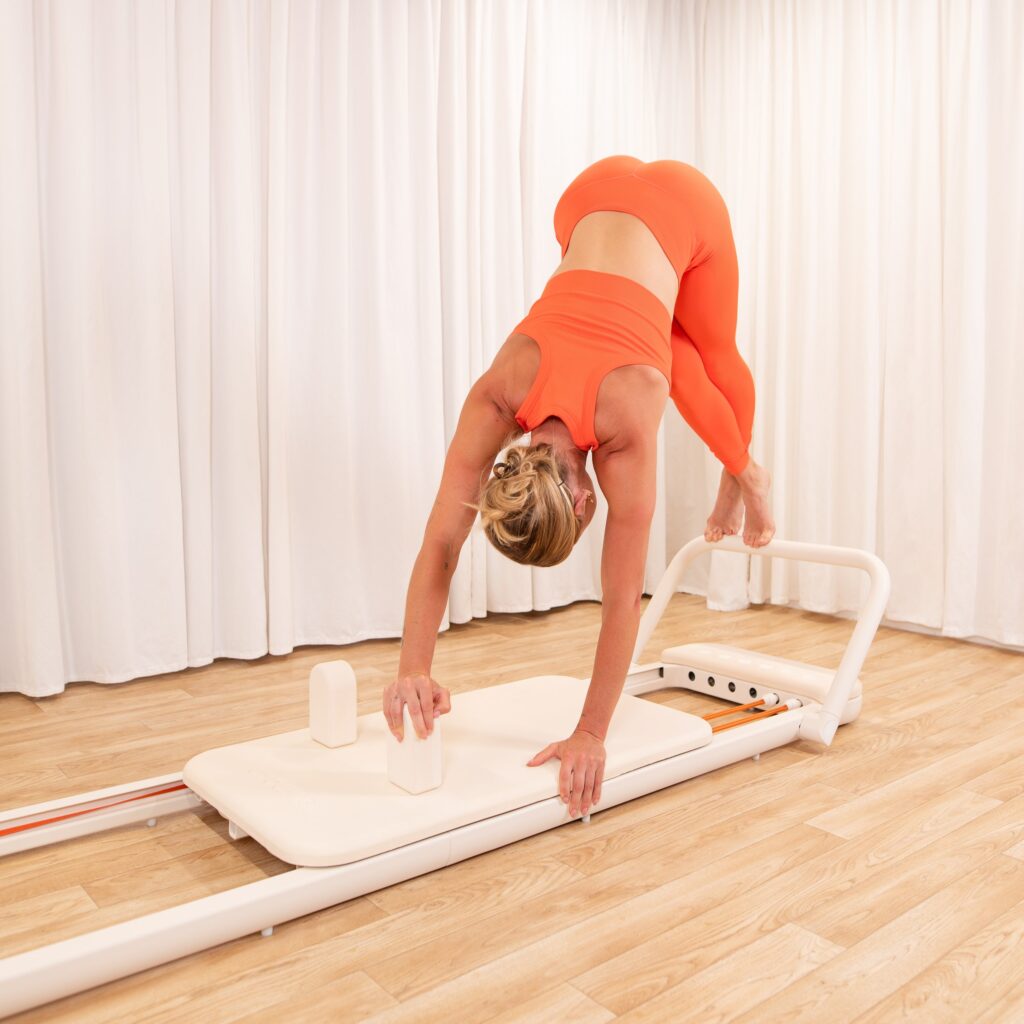
Credit: Somato The Reformer, $2,100
$2,500
